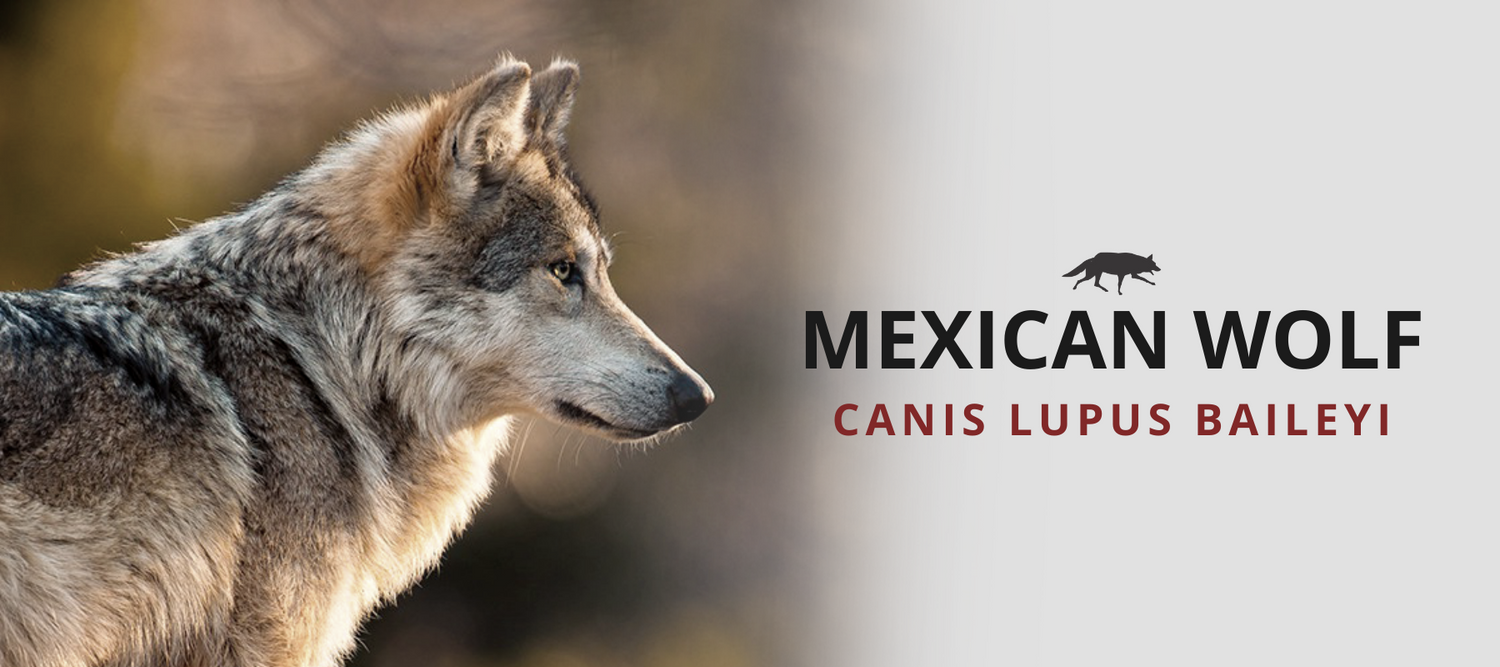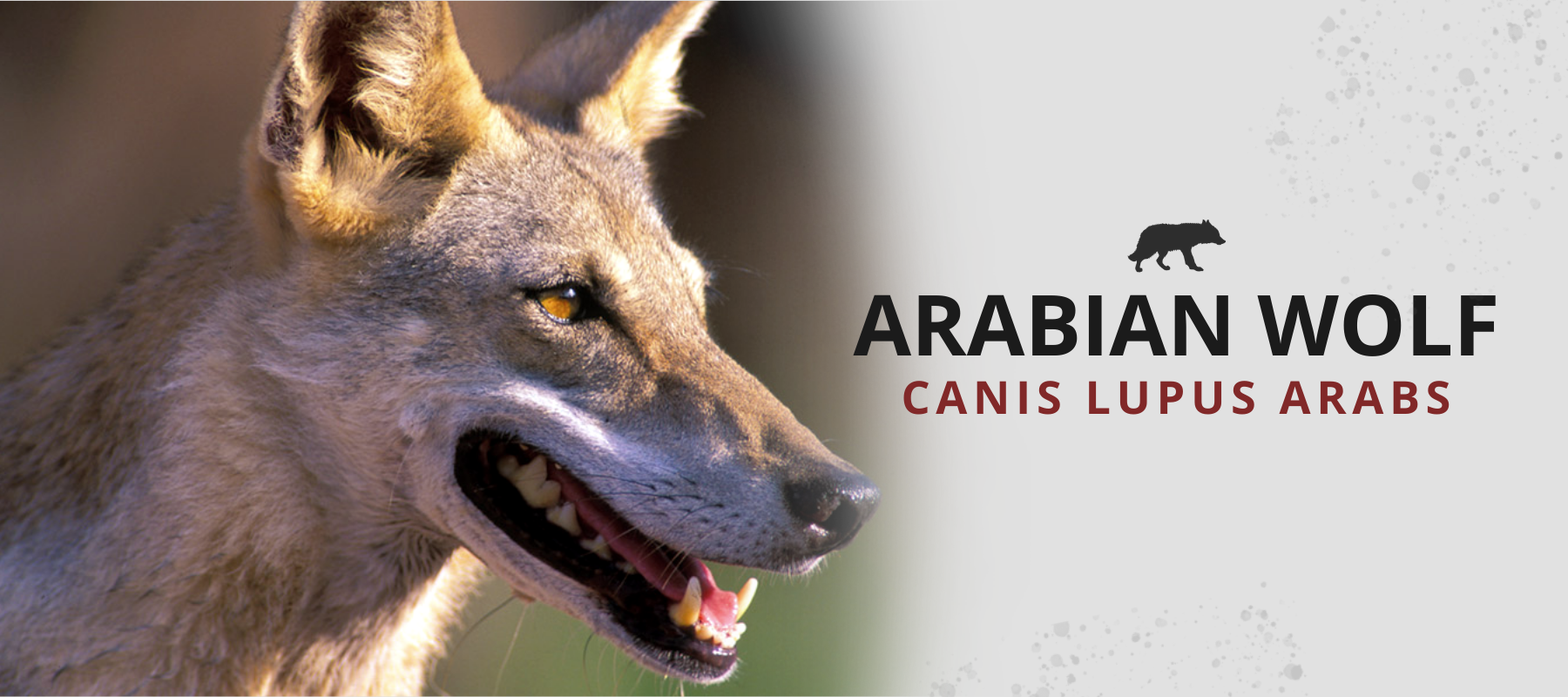
CANIS LUPUS BAILEYI
The Mexican wolf (Canis lupus baileyi) is a subspecies of the grey wolf (Canis lupus). This canid is the smallest and rarest wolf species in North America.
- Common name: Mexican wolf
- Scientific name: Canis Lupus Baileyi
- Specie: Gray wolf
- Type: Mammals
- Diet: Carnivore
- Average size: 3,9 to 4,9 feet
- Weight: 59 to 81 lbs
MEXICAN WOLF DESCRIPTION
The Mexican gray wolf has a characteristic long mane that emphasizes the bright colors of the fur. Its color is a mixture of grey, brown, black and rust on its back. The tail and ears are often black.
This canidae measures between 3,9 and 4,9 feet long from snout to tail with a height at the withers of about 2,6 feet. Its weight varies between 59 and 81 lbs.

MEXICAN WOLF HABITAT
Until recently, the Mexican wolf could be found from the state of Sonora to the Chihuahua Desert in central Mexico, west of Texas, southern New Mexico and Arizona.
During the 20th century, the country's demographic advance and agricultural development led to the depletion of the prey that wolves are so fond of. This led them to prey more frequently on the livestock of ranchers. Much effort on the part of governments was made to eliminate the threat and eradicate the species Canis lupus baileyi.
Today, the Mexican wolf species is virtually extinct in the wild. Nevertheless, there are still some residual populations in Mexico.
MEXICAN GRAY WOLF DIET
The main prey of the Mexican grey wolf is the white-tailed deer. However, it also likes to feast on elk, pronghorns, rabbits and other small mammals.

MEXICAN WOLF BEHAVIOR
The Mexican gray wolf lives in a pack generally composed of 5 or 6 individuals. The pack consists of the alpha couple and their offspring of the current year.
Packs are very rarely encountered because the boundaries of their territory are well-defined by feces and urine. Howling is also a signal to warn other packs that the territory is taken.
MEXICAN WOLF POPULATION
In 1981, there were only fifty Mexican wolves listed. The last wolves were killed in 1976 in the states of Texas, Arizona and New Mexico.
A few breeding facilities were built, including the Wild Canid Survival and Research Center, to conserve the species before its total extinction. This center was created to feed the Albuquerque Zoo, the St. Louis Zoo and the Rio Grande Zoo.
It is estimated that about 300 wolves live in these centers.

MEXICAN WOLF CONSERVATION
The main cause of the extinction of this canid is the loss of its habitat. Today the wild wolf populations in Mexico are too few to ensure continuity of reproduction and that it is maintained in good conditions.
Conservationists are trying to get approval from the authorities for areas where wolves could be released. The Ministry of Defence had already rejected a request to reintroduce the species on the White Sands base.
Other requests were made at different sites, but were either postponed or rejected. If these decisions continue to be made over time, wolves in captivity may no longer be able to adapt to wildlife and will only be able to survive in captivity.
Only one of the releases was accepted with a release of three males, three females and three cubs in central Arizona. In 2007, after a careful census, no less than sixty specimens were counted.

Many of those opposed to the reintroduction of wolves in Mexico and the southwestern United States express doubts about the impacts they could have on livestock or game populations. To reassure them, Defenders of Wildlife are working hard to replace myths and misconceptions about wolves with facts. These actions ultimately help to gain support from local communities, alleviate fears and build political will for wolf conservation.
On the whole, wolves attack very little livestock. However, the Defenders of Wildlife Foundation Trust Wolf Compensation was established to compensate farmers for canine attacks on their livestock. This helps to prevent conflict between humans and wolves.
The Apache-Sitgreaves National Forest, located in eastern Arizona where Mexican wolves roam, has proposed a new policy requiring the proper disposal of livestock carcasses for the first time, livestock owners would be charged with the responsibility of preventing conflict with wolves.
The official three-year review (Report Package) of the Mexican wolf reintroduction program, written by a group of independent scientists, informed of the need for livestock operators on public lands to take some responsibility for managing and disposing of carcasses to reduce the likelihood of these canids becoming accustomed to feeding on farms.
The American Society of Mammalogists also urged that wolves be protected from the consequences of recovering livestock carcasses. Several cases have emerged. Wolves, which originally preyed on moose and ignored the cows, after tasting dead cattle carcasses learned to prey on cows and ignore the moose.
If you want to support wolf protection, get your Mexican wolf t-shirt now ! And discover the amazing Arabian wolf species.



